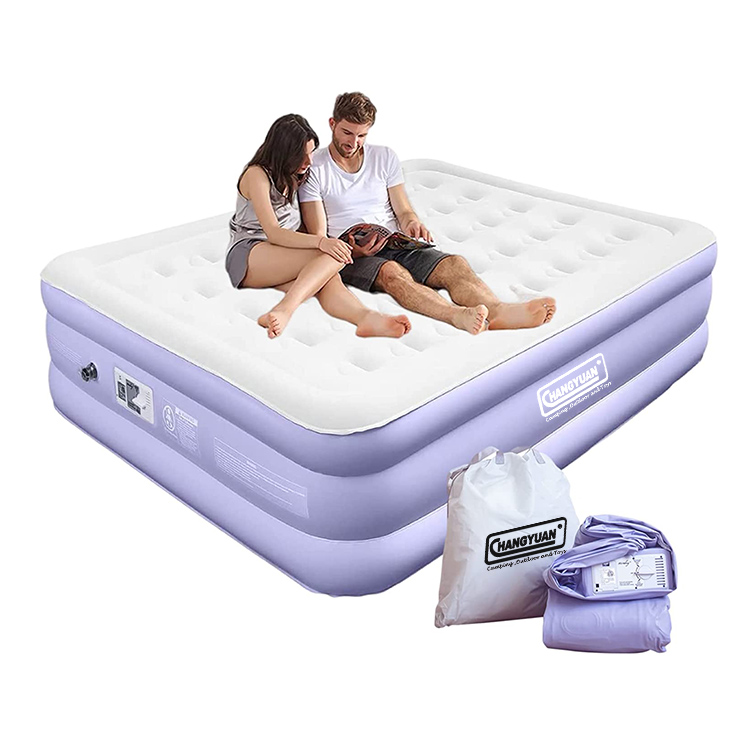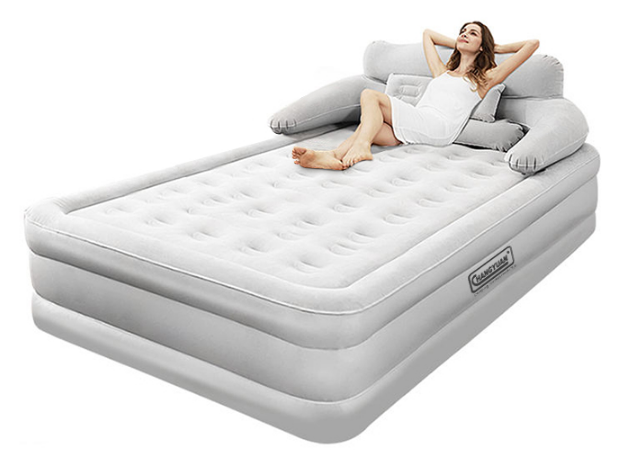Have you ever found yourself in a situation where you didn't have a bed to sleep on? It might have happened when you hosted a visitor, attended a sleepover, or even went camping. Air mattresses are useful in situations like these when you wish you or a friend had a comfortable surface to rest their tired bodies on.

When selecting an air mattress, it's essential to consider various features. The following aspects are particularly crucial:
1. Size:
Air inflatable mattresses come in different sizes, such as twin, full, queen, and king. Full and queen sizes are suitable for two people, while king-size mattresses are designed for more than two individuals. On the other hand, twin-size air mattresses are the smallest and intended for single use. Keep in mind that dimensions may vary depending on the brand and model.
2. Height:
The height of the air mattress significantly affects ease of entry and exit, as well as overall comfort. Heights range from 7 to 20 inches. Single-high air mattresses, with a height of 7 to 9 inches, are closer to the ground, making them more compact and easier to store or transport. They are also generally more budget-friendly.
In contrast, double-high air mattresses are taller, ranging from 18 to 20 inches. These mattresses closely resemble the height of traditional beds, offering enhanced comfort and ease of use. However, they tend to be pricier compared to single-high air mattresses.
3. Firmness
When it comes to firmness, you can find air mattress bad that range from extra soft to extra firm. Aside from that, the firmness of an air mattress is typically determined by the amount of air contained within the mattress. More air means a firmer mattress, while less air means a softer mattress.
Consider your personal preferences for mattress firmness when selecting an air mattress. Some people like a firm mattress for support, while others like a softer mattress for comfort. According to research, a medium-firm mattress provides the best comfort and support.
4. Material
Most air mattresses are made of one of the following materials:
PVC (polyvinyl chloride) is a widely used material in air mattresses. It is a waterproof and long-lasting synthetic plastic material. PVC air mattresses are frequently less expensive than other types of air mattresses and are simple to clean.
TPU (thermoplastic polyurethane) is a type of synthetic rubber-like substance that is waterproof and long-lasting. TPU air mattresses are typically more expensive than PVC air mattresses, but they are also more versatile and comfortable.
Textile materials such as nylon, polyester, or cotton are also used to make air mattresses. These components are frequently used to create the top layer of mattresses, which offers a cozy sleeping surface.
The top layer of some high-end air mattresses may also be made of memory foam or latex, which is more supportive and comfortable to sleep on. When selecting an air mattress, the material is crucial to take into account as it can affect the mattress's comfort, durability, and ease of cleaning.

5. Construction
The typical design of an air mattress includes one or more air chambers that can be inflated to create the sleeping surface. PVC, TPU, or other synthetic materials that are long-lasting and waterproof are used to create the air chamber.
Two major components make up an air mattress' construction:
The base or bottom layer: This is the part of the mattress that sits on the ground or on the bed frame. This component is usually made of PVC or TPU and is responsible for providing the shape and support of a mattress.
The top or comfort layer: This is the part of the mattress that you sleep on. It is usually made of a textile material such as nylon, polyester, or cotton and can be quilted for added comfort. Some air mattresses also have a memory foam or latex layer on top for added comfort and support.
Some air mattresses include built-in pumps that allow you to inflate or deflate the mattress to change its firmness. Others might necessitate the use of an external pump.
6. Inflation options
Air mattresses must be inflated using either a built-in or external pump. Most air mattresses include an in-built pump that is typically powered by batteries or electricity. Some air mattresses include an external pump that can be used to manually inflate the mattress.
When choosing an air mattress, think about the inflation options and figure out which one is best for you. If you intend to use the mattress frequently, especially indoors, you should consider getting one with a built-in pump. If you intend to use the mattress only occasionally, especially as an outdoor air mattress, an external pump may be a better option.
7. Warranty
The majority of air mattresses come with a warranty that covers defects in materials and workmanship. The warranty period varies depending on the brand and model of the air mattress. Some air mattresses have a one-year warranty, while others may have a two-year or longer warranty.
It is critical to carefully read the warranty information and understand what is and is not covered. It's also important to keep a copy of the purchase receipt or proof of purchase, as this is typically required to make a warranty claim.
